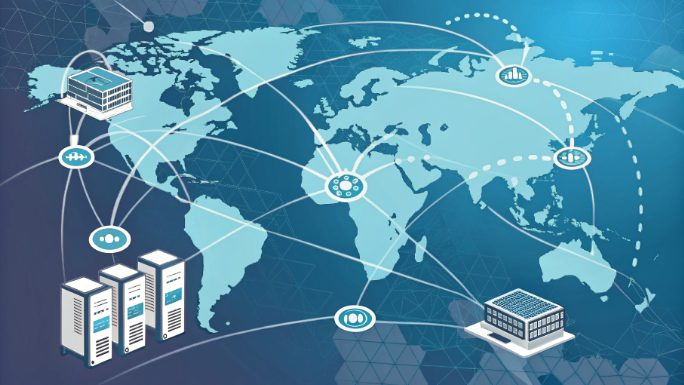Why Pick BGP Lines for Overseas High – Bandwidth Servers?

In today’s interconnected digital landscape, BGP optimization has become a critical factor for businesses deploying high-bandwidth overseas servers. As global data transfer requirements escalate exponentially, the importance of efficient routing mechanisms cannot be overstated. Whether you’re running a global gaming platform, streaming service, or enterprise application, the choice of network infrastructure can make or break your online presence. The integration of BGP optimization into server hosting and colocation strategies has emerged as a game-changing solution for organizations seeking superior network performance.
Understanding BGP Optimization: The Technical Deep Dive
Border Gateway Protocol (BGP) represents the backbone of internet routing decisions. Unlike traditional single-route networking, Border Gateway Protocol optimization employs dynamic path selection algorithms that continuously evaluate multiple network paths. This intelligent routing mechanism considers factors like latency, packet loss, and network congestion in real-time. At its core, BGP operates as a path-vector routing protocol, maintaining comprehensive routing tables that contain network path information for reaching specific destinations. The protocol’s ability to handle large routing tables and make decisions based on various attributes makes it indispensable for modern internet infrastructure.
The Architecture Behind BGP-Optimized Networks
Modern Border Gateway Protocol implementations leverage advanced routing tables and path-vector protocols. These systems maintain detailed topology maps of interconnected autonomous systems (AS), enabling optimized packet delivery across global networks. The routing decisions occur at the edge routers, where complex algorithms process multiple parameters including:
- AS path length optimization: Calculating the most efficient route through multiple autonomous systems
- Route stability metrics: Evaluating the historical reliability of different network paths
- Bandwidth capacity analysis: Assessing available throughput on various routes
- Geographic proximity calculations: Determining physical distance impact on latency
These sophisticated routing mechanisms work in concert to ensure optimal packet delivery. The BGP decision process involves multiple stages of evaluation, comparing various path attributes before selecting the best route. This includes analyzing AS_PATH length, origin type, MED values, and other Border Gateway Protocol attributes that influence route selection.
Performance Advantages of BGP Optimization
BGP-optimized networks deliver substantial performance improvements across several key metrics. The implementation of BGP optimization can transform network performance in multiple ways:
- Reduced latency through intelligent path selection: Packets travel through the most efficient routes, minimizing delay
- Enhanced network stability via redundant routing: Multiple path options ensure continuous connectivity
- Improved packet delivery rates: Sophisticated routing decisions reduce packet loss
- Automatic failover capabilities: Instant rerouting when network issues occur
- Load balancing across multiple carriers: Traffic distribution for optimal resource utilization
Use Cases for BGP-Optimized Servers
Several industries benefit significantly from Border Gateway Protocol optimization. The technology proves particularly valuable in scenarios requiring high performance and reliability:
- Online gaming platforms requiring ultra-low latency: Gaming servers demand minimal lag for competitive gameplay
- Global content delivery networks (CDNs): Efficient content distribution across geographical locations
- High-frequency trading systems: Microsecond-level latency requirements for financial transactions
- Video streaming services: Consistent high-bandwidth delivery for quality streaming
- Multi-region cloud deployments: Seamless operation across diverse geographical locations
Technical Considerations for Implementation
When implementing BGP optimization for overseas servers, network engineers must address several critical technical aspects:
- AS number registration and management: Proper registration with regional internet registries
- Router configuration and BGP peering: Establishing and maintaining BGP sessions
- Traffic engineering policies: Implementing rules for traffic flow control
- Routing table optimization: Managing route aggregation and filtering
- Security implementations (RPKI, BGPsec): Ensuring routing security
Network Security and BGP Optimization
Security remains paramount in BGP-optimized environments. Modern implementations incorporate robust security measures to protect against various threats:
- RPKI validation: Verifying the legitimacy of route origins
- BGP flowspec for DDoS mitigation: Dynamic traffic filtering capabilities
- Route origin validation: Preventing unauthorized route announcements
- Prefix filtering mechanisms: Controlling acceptable route advertisements
Cost-Benefit Analysis
While BGP optimization requires initial investment in infrastructure and expertise, the long-term benefits often outweigh the costs. Organizations typically see returns in several areas:
- Reduced bandwidth costs through efficient routing: Optimized path selection minimizes unnecessary data transfer
- Lower operational overhead: Automated routing decisions reduce manual intervention
- Improved service reliability: Enhanced uptime and performance metrics
- Enhanced customer satisfaction: Better user experience through improved connectivity
Monitoring and Optimization Tools
Essential tools for maintaining BGP-optimized networks include sophisticated monitoring and management solutions:
- Route analytics platforms: Real-time visibility into routing behavior
- Network performance monitoring systems: Comprehensive performance metrics tracking
- BGP looking glass servers: External routing table verification
- Traffic analysis tools: Detailed traffic pattern analysis
Future Trends in BGP Optimization
Looking ahead, BGP optimization continues to evolve with emerging technologies and methodologies:
- AI-driven route optimization: Machine learning algorithms for predictive routing
- Enhanced security protocols: Advanced protection against routing attacks
- Integration with SD-WAN technologies: Seamless software-defined networking
- Improved automation capabilities: Reduced manual configuration requirements
As global connectivity demands continue to grow, BGP optimization remains crucial for high-bandwidth overseas hosting and colocation services. The technology’s ability to enhance network performance, ensure reliability, and optimize resource utilization makes it an indispensable component of modern internet infrastructure. Understanding and implementing these advanced networking techniques can significantly enhance your server infrastructure’s performance and reliability in an increasingly connected world.

